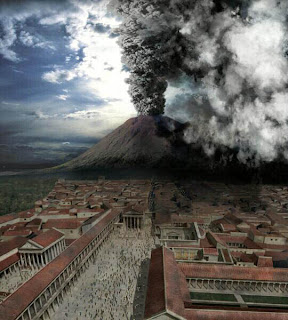 The 1960 Valdivia earthquake (also known as the Great Chilean Earthquake) occured on the 22 May 1960 and is considered as the strongest and most powerful earthquake every recorded. It was measured 9.5 on the Richter Scale. The earthquake struck at 2:11pm local time and it resulted in tsunamis affecting southern Chile, Hawaii, Japan, the Phillipines, eastern New Zealand, southeast Australia and the Aleutian Islands in Alaska. The focus of the earthquake was 33km below the ground. The epicentre was near Cañete and about 700km south of Santiago, but Valdvia was the most affected city.
The 1960 Valdivia earthquake (also known as the Great Chilean Earthquake) occured on the 22 May 1960 and is considered as the strongest and most powerful earthquake every recorded. It was measured 9.5 on the Richter Scale. The earthquake struck at 2:11pm local time and it resulted in tsunamis affecting southern Chile, Hawaii, Japan, the Phillipines, eastern New Zealand, southeast Australia and the Aleutian Islands in Alaska. The focus of the earthquake was 33km below the ground. The epicentre was near Cañete and about 700km south of Santiago, but Valdvia was the most affected city.The earthquake caused tsunamis that were 25 metres high and a main tsunami also raced across the Pacific Ocean and devastated Hawaii. Places 10000km away from the epicentre had waves about 11 metres high.
Approximately 1,655 were killed, 3,000 were injured, 2,000,000 were left homeless, and $550 million damage was caused in southern Chile. The tsunamis caused 61 deaths, $75 million dam age in Hawaii; 138 deaths and $50 million damage in Japan; 32 dead and missing in the Philippines; and $500,000 damage to the west coast of the United States.
age in Hawaii; 138 deaths and $50 million damage in Japan; 32 dead and missing in the Philippines; and $500,000 damage to the west coast of the United States.
 age in Hawaii; 138 deaths and $50 million damage in Japan; 32 dead and missing in the Philippines; and $500,000 damage to the west coast of the United States.
age in Hawaii; 138 deaths and $50 million damage in Japan; 32 dead and missing in the Philippines; and $500,000 damage to the west coast of the United States. There was severe damage from shaking in the Valdivia-Puerto Montt area after the earthquake. Most of the casualties and much of the damage was because of large tsunamis which caused damage along the coast of Chile from Lebu to Puerto Aisen and in many areas of the Pacific Ocean. Puerto Saavedra was completely destroyed by waves which reached heights of 11.5 m (38 ft) and carried remains of houses inland as much as 3 km (2 mi). Wave heights of 8 m (26 ft) caused a lot of damage at Corral.
The tsunamis caused 61 deaths and severe damage in Hawaii, mostly at Hilo, where the runup height reached 10.6 m (35 ft). Waves as high as 5.5 m (18 ft) struck northern Honshu about 1 day after the quake, where it destroyed more than 1600 homes and left 185 people dead or missing. Another 32 people were dead or missing in the Philippines after the tsunami hit those islands. Damage also occurred on Easter Island, in the Samoa Islands and in California. One to 1.5 m (3-5 ft) of subsidence occurred along the Chilean coast from the south end of the Arauco Peninsula to Quellon on Chiloe Island. As much of 3 m (10 ft) of uplift occurred on Isla Guafo. Many landslides occurred in the Chilean Lake District from Lago Villarica to Lago Todos los Santos.
On May 24, Volcan Puyehue erupted, sending ash and steam as high as 6,000 m. The eruption continued for several weeks.
This earthquake was preceded by 4 foreshocks bigger than magnitude 7.0, including a magnitude 7.9 on May 21 that caused severe damage in the Concepcion area. Many aftershocks occurred, with 5 of magnitude 7.0 or greater through Nov 1.
This wass the largest earthquake of the 20th Century. The rupture zone was estimated to be about 1000 km long, from Lebu to Puerto Aisen.

Bibliography
"1960 Valdivia Earthquake." Wikipedia. 11 Dec. 2008 http://en.wikipedia.org/wiki/Great_Chilean_Earthquake


 Mount Vesuvius was a volcano which had not erupted for many years. Under it, was a city named Pompeii. People in Pompeii thought that Mt. Vesuvius was just a mountain, so they did not care about it. There was not even a word called 'volcano' in their language then!
Mount Vesuvius was a volcano which had not erupted for many years. Under it, was a city named Pompeii. People in Pompeii thought that Mt. Vesuvius was just a mountain, so they did not care about it. There was not even a word called 'volcano' in their language then!